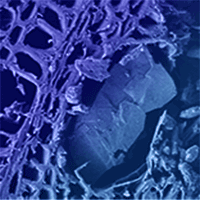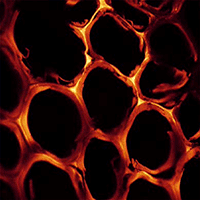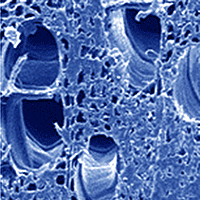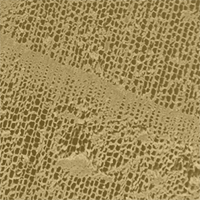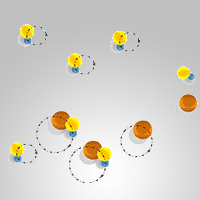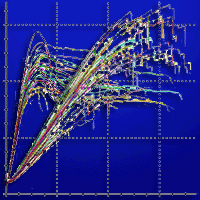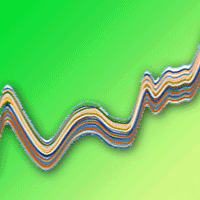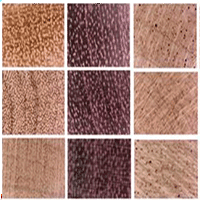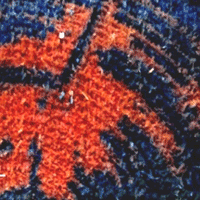
Improving impregnation properties of fir wood to acid copper chromate (ACC) with microwave pre-treatment
Milad Ramezanpour (1), Asghar Tarmian (2), Hamid Reza Taghiyari (3)
iForest - Biogeosciences and Forestry, Volume 8, Issue 1, Pages 89-94 (2015)
doi: https://doi.org/10.3832/ifor1119-007
Published: Apr 01, 2014 - Copyright © 2015 SISEF
Technical Notes
Abstract
Effects of microwave pre-treatment on impregnation properties in fir wood (Abies alba L.) with acid copper chromate (ACC) were studied here. Flat-sawn specimen boards were prepared with moisture content (MC) of 40 ± 5% and were exposed to microwave radiation with 2450 MHz frequency for 10, 12, 14, and 16 minutes at four different radiation treatments. Microwave-treated specimens, along with the control specimens, were conditioned to the final MC of 12% and then impregnated with 5%-ACC solution, using an empty-cell process. The impregnation properties were then measured, including retention, maximum and minimum depths of penetration, impregnated area in the cross-section, and ACC-leaching. Image J software was used to determine depths of penetration. Results showed that microwave pre-treatment significantly improved all the impregnation properties, with the exception of leaching. Clear direct relation was found between the duration of microwave radiation with the properties. It can be concluded that microwave pre-treatment can be used to significantly improve impregnation properties in fir wood.
Keywords
Abies alba, Fir Wood, Impregnation, Microwave Radiation, Pre-treatment
Authors’ Info
Authors’ address
Faculty of Natural Resources, University of Tehran, Tehran (Iran)
Department of Wood and Paper Science & Technology, Faculty of Natural Resources, University of Tehran, Tehran (Iran)
Wood Science and Technology Department, Faculty of Civil Engineering, Shahid Rajaee Teacher Training University, Tehran (Iran)
Corresponding author
Paper Info
Citation
Ramezanpour M, Tarmian A, Taghiyari HR (2015). Improving impregnation properties of fir wood to acid copper chromate (ACC) with microwave pre-treatment. iForest 8: 89-94. - doi: 10.3832/ifor1119-007
Academic Editor
Elena Paoletti
Paper history
Received: Sep 07, 2013
Accepted: Nov 11, 2013
First online: Apr 01, 2014
Publication Date: Feb 02, 2015
Publication Time: 4.70 months
Copyright Information
© SISEF - The Italian Society of Silviculture and Forest Ecology 2015
Open Access
This article is distributed under the terms of the Creative Commons Attribution-Non Commercial 4.0 International (https://creativecommons.org/licenses/by-nc/4.0/), which permits unrestricted use, distribution, and reproduction in any medium, provided you give appropriate credit to the original author(s) and the source, provide a link to the Creative Commons license, and indicate if changes were made.
Web Metrics
Breakdown by View Type
Article Usage
Total Article Views: 58007
(from publication date up to now)
Breakdown by View Type
HTML Page Views: 46557
Abstract Page Views: 3115
PDF Downloads: 6300
Citation/Reference Downloads: 18
XML Downloads: 2017
Web Metrics
Days since publication: 4293
Overall contacts: 58007
Avg. contacts per week: 94.58
Citation Metrics
Article Citations
Article citations are based on data periodically collected from the Clarivate Web of Science web site
(last update: Mar 2025)
Total number of cites (since 2015): 20
Average cites per year: 1.82
Publication Metrics
by Dimensions ©
Articles citing this article
List of the papers citing this article based on CrossRef Cited-by.
References
Innovative wood drying: applying microwave and solar technologies to wood drying. VDM Verlag, Saarbrucken, Germany, pp. 120.
Gscholar
Effect of pre-steaming on mass transfer properties of fir wood (Abies alba L.): a gymnosperm species with torus margo pit membrane. BioResources 7: 1907-1918.
Gscholar
Analysis of rheological and thermo-hygro-mechanical behavior of stress-laminated timber bridge deck in variable environmental conditions. Maderas Ciencia y tecnologia 14 (3): 303-319.
Gscholar
Effects of silver and zinc-oxide nanoparticles on gas and liquid permeability of heat-treated Paulownia wood. Austrian Journal of Forest Science 129 (2): 106-123.
Gscholar
Bio incised wood as substrate for surface modifications. In: Proceedings of the “4th European Conference on Wood Modification” (Englund F, Hill CAS, Militz H, Segerholm BK eds). Stockholm (Sweden) 27-29 May 2009, pp. 197-200.
Gscholar
Correlation between gas and liquid permeabilities in some nanosilver-impregnated and untreated hardwoods. Journal of Tropical Forest Science 24 (2): 249-255.
Gscholar
New wood based materials TORGVIN and VINTORG. In: Proceedings of the “5th Pacific Rim Bio-Based Composite Symposium”. Canberra (Australia) 10-13 December 2000. Australian National University, Canberra, Australia, pp. 756-764.
Gscholar
High-intensity microwave wood modification for increasing permeability. Forest Products Journal 59: 84-92.
Gscholar
Spruce impregnation, finally a breakthrough by means of microwave radiation In: Proceedings of the “4th Meeting of the Nordic Baltic Network in Wood Material Science & Engineering (WSE)”. Riga (Latvia) 13-14 Nov 2008. SNS-Nordic Forest Research Co-operation Committee, Copenhagen University, Horsholm, Denmark, pp. 42-48.
Gscholar
A method for increasing the permeability of wood. US patent 6: 596-975.
Gscholar
Study on permeable mechanism with dyestuff during wood dyeing. Journal of the Beijing Forest University 24: 79-82.
Gscholar
An experimental and investigation of the microwave heating of wood. The Journal of Microwave Power and Electromagnetic Energy 33 (2): 121-133.
Gscholar

